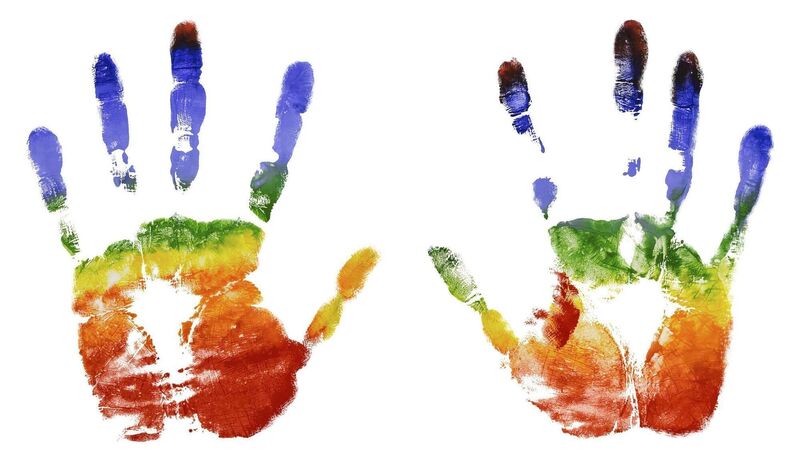When I shared my views on gender identity in the past, I found myself being castigated by both sides of the debate.
There were those who accused me of being too populist and woke, and others who accused me of sitting on the fence and not coming down strong enough to support their position.
It seems no one on either side of this debate wants to hear your view unless it fully endorses theirs.
In writing about gender issues in this column, I am asking a question I do not have the answer to.
My question concerns the best time to discuss the nuances of gender with children, and how much information is enough. It has no moralistic intent. Instead, I am trying to advocate for young children who may struggle to understand the concepts of gender variance.
I have worked with many children with gender-related issues over the course of my career, and supported them to the best of my ability.
I am aware that the risk of mental distress is considerably higher for members of the LGBT+ community, and believe these children deserve every support they can get.
Parents have contacted me recently because they are concerned about their young children’s understanding of gender. One parent told me how her nine-year-old boy came home from school before the summer break and was very upset because he thought he would turn into a girl in a few years without having any say over this transformation. He tearfully said: “I like being a boy, Mummy, I don’t want to change into a girl”.
Undoubtedly, this boy had got his wires crossed during a discussion in school that day, but perhaps the eggshell approach required around this topic is creating confusion.
It is not surprising that some children might get confused. I have witnessed many articulate adults tie themselves in knots trying to discuss gender. Statements such as “what I meant was” or “I don’t mean it in that way” or “I mean no offence by what I am about to say” are commonplace. The landmine nature of gender-
related language means that we have to treble-filter every utterance and explain what we mean so we’re not ‘picked up the wrong way’.
Black and white world
Our evolving understanding of gender means absolutes no longer exist, and terms such as ‘fluidity’ and ‘non-binary’ have become the norm. These terms are tricky enough for adults to understand and conceptualise, never mind for young children.
While I am in favour, in the main, of making children as aware as possible about contemporary aspects of the world they live in, there comes a point where we have to consider whether the information may be too complex, too nuanced, or beyond their comprehension.
Most young children have not developed an ability to understand abstract concepts, so explanations need to be explicit and not implicit if we want them to understand something.
I fully accept that the world of sexuality and gender is not absolute, but the lens through which most primary schoolchildren see the world is.
The black-and-white nature of childhood understanding is a critical difference between most children and adults.
Their world needs to be crystal clear to make sense of it and feel safe. They grow up with stories of supervillains and superheroes, cops and robbers, the tortoise and the hare. They learn the difference between these concepts by exaggerated clarity.
Think about reading comics as a child: the ‘bad’ characters often wore prison uniforms or a bag on their back with the words ‘Swag’ or ‘Loot’ written on them. These visual signposts allowed the child to establish clarity between the good and bad characters. It is only in adolescence that children start to understand that people can be good and bad, and these polarities can co-exist at the same time.
The loss of a world where ‘good’ and ‘bad’ and ‘right’ and ‘wrong’ are explicit concepts and negotiating a world where people can be both is confusing for young children and can lead to anxiety.
Being unaware of nuance and the greyness of human life can be a blessing, sparing them from becoming overwhelmed by information they are unable to understand.
Confusing conversation
Protecting the innocence of childhood is becoming increasingly difficult. The world of mass media means that children are exposed to more information intended for adults from a young age than ever before. This means parents have to inform children about aspects of life far earlier than they otherwise might want to.
Explaining why many young people died in a terrorist attack at an Arianna Grande concert in Manchester was difficult. Explaining that a young primary school teacher was attacked as she went out for a run was difficult, and explaining there are new Ukrainian children in your class because a Russian tyrant bombed their homes was also difficult. When tasked with relating these complex events to children, the key is to protect them from too much detail and reassure them of their safety — ‘This will never happen to you and you are safe’.
However, these reassurances are not feasible in the context of a gender conversation. To maintain a spirit of inclusivity, we cannot say: “This will never happen to you”, and to avoid offending others, we almost have to normalise these concepts. Our fear of ‘saying the wrong thing’ can almost sway us unwittingly into the role of promoting a particular position.
In a recent conversation with my son about sexuality, I went so far as trying to convince him that it was OK to be gay that he jokingly asked me: “Dad, do you want me to be gay?”.
The line between awareness and suggestion is a thin one, which we all struggle to negotiate. But how do we promote inclusivity and diversity without crossing it?
While there are many children for whom being transgender or gay explains why they felt different or didn’t fit in, there may be others who wonder if gender identity or sexual orientation might be the only explanation for why they too feel different or don’t ‘fit in’. This is not to say these young people are ‘putting it on’ or ‘faking it’ — they are merely trying to find themselves.
We have got to be careful that we don’t over-assign sexual orientation and gender as the only reasons why a child might feel that they don’t ‘fit in’. While gender variance and sexual orientation may be the reason for some, there are many other reasons for these feelings to exist.
Parents I’ve spoken to fear that if they have concerns about the gender debate, or certainly if they express them, they will be vilified as transphobic or homophobic parents. The fear of such accusations has left adults feeling too paralysed to ask questions, or they end up talking to children in incomprehensible circles: “It is OK to be different, but you don’t have to be different, but if you are different that’s fine, but if you’re not different that’s fine too.’
This is where we risk confusing our children, who understandably might ask: “What are you saying?”.
The answer is many parents don’t know what they are saying, and an unspoken pact is developed where we vow not to bring this topic up again.
Finding middle ground
I visited a primary school some years ago where the teacher in charge of wellbeing proudly showed me around the building, pointing out the ‘Worry Wall’ where children would post their worries, the ‘Worry Bench’ where they could sit if they were worried, and the ‘Worry Box’ which had an array of squishy toys that children could take if they were worried. I remember thinking: ‘If I was a child in this class and I didn’t worry, I would probably think something was wrong with me’. This is where we need to be mindful not to move the dial too far in the other direction.
We need to be clear with children as well as be inclusive. Sometimes our fear of saying the wrong thing or our floundering attempts to clarify what could be interpreted as disrespectful can spare us from offending people, but can lead to confusion instead.
In attempting to explain fluidity and non-binary concepts, we have ended up in a polarised debate, the most non-fluid and binary discussion I have ever witnessed. The belief that if you are not 100% with us, you are against us, is unhelpful. We need to establish a middle ground where questions can be asked, and discussions can be had.
Can someone be pro-climate but still enjoy a burger or drive a diesel car? Of course they can. But extremist messaging does not lend itself to nuance. Can you be pro-transgender but not want to raise your child in a gender-neutral manner? Of course you can. Can you support trans rights, but have concerns about the role of transgender people competing in elite sports? Yes, you can. We need to model a spirit of openness and discussion so that the next generation can feel free to ask questions too.
In a time where we celebrate inclusivity and diversity, it seems we have never been more fearful of voicing an opinion. We have to consider the silencing impact these polarised debates are having on the children of today.
- Dr Colman Noctor is a child psychotherapist.
CONNECT WITH US TODAY
Be the first to know the latest news and updates










